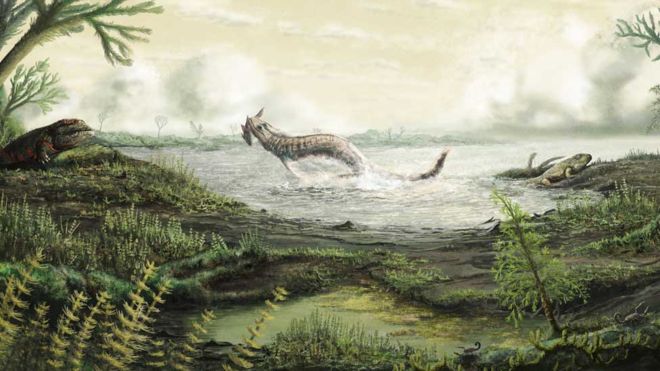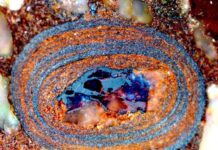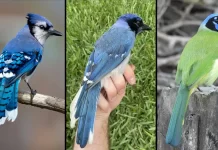Scientists discovered the fossils of five new species in the Scottish Borders.
Writing in Nature Ecology & Evolution, Jennifer Clack from the University Museum of Zoology Cambridge in the UK and colleagues describe four-legged finds to help fill a 25-million-year gap in the fossil record.
Some 360 million years ago, just after a mass extinction that characterised the tail end of the Devonian epoch, four-legged vertebrates – tetrapods – quickly split into two groups: the ancestors of amphibians and the ancestors of amniotes (mammals, bird and reptiles).
Fossils from this crucial time in evolutionary history are few and far between. Until now, only bits of bones have been found in western Scotland and Nova Scotia, Canada.
Scottish fossil hunter Stan Wood found promising specimens in Willie’s Hole, Chirnside – just a few kilometres from the England border.
Wood passed away in 2012. But when Clack and her group excavated the area, they found bones dating back to a few million years after the end-Devonian mass extinction, called the Tournaisian period, locked in ancient rock in Scotland and northern England.
Two of the organisms represented early amphibians, while the remaining three were predecessors of birds, reptiles and mammals.
The animals described are small – the largest skull measured 80 millimetres, around the length of a bankcard.
Among the fossils described was a lower jaw with an unusual double row of teeth, which the researchers named Diploradus austiumensis, and the partial skull of a short-snouted creature with slender limbs named Aytonerpeton microps.
And while at least seven more organisms were present, their remains weren’t complete enough for description or analysis.
“Although an extinction event at the end of the Devonian saw the demise of many archaic fish groups, our studies provide new perspectives on the recovery and diversification of surviving groups that went on to found the basis of modern vertebrate diversity,” the researchers write.
This suggests that tetrapods split into different groups very quickly following the mass extinction.
The gap in tetrapod data remains a debated issue. Some researchers believe a lack of oxygen around this period led to a decrease in tetrapod numbers – hence the lack of fossil remains.
But Clack and her crew analysed fossilised charcoal and concluded that oxygen levels during the Tournaisian were about the same as the Devonian, refuting this theory.















